By John Y. Brown III, on Wed Apr 16, 2014 at 12:00 PM ET  Key West, Florida… Forever and always the year ’round spring break city for ages 18 to 88–but a city that really isn’t a city at all and more like a narrow corridor off of an alcove off of some real city (but nobody is sure which one) that just happens to be located somewhere between an ocean beach and the end of the world. Key West, Florida… Forever and always the year ’round spring break city for ages 18 to 88–but a city that really isn’t a city at all and more like a narrow corridor off of an alcove off of some real city (but nobody is sure which one) that just happens to be located somewhere between an ocean beach and the end of the world.
It’s a real place where real characters like Ernest Hemingway once briefly lived but feels more like an imaginary place where imaginary characters like Jack Sparrow would permanently live, if he was real.
The daily rumblings of the town aren’t anything like back home and resemble instead something akin to an outdoor rave–the morning after the actual rave. And the evenings are like the night after a bad hangover after you have been resuscitated with a hair-of-the-dog concoction.
And as shady and delirious (even if you are sober, like me) as all this might sound, it is kind of wonderful and mysterious, too. And even restorative –in a kind of mischievous and decadent way.
Time seems to stand still –or at least move in slow motion– not because nothing is happening but because the locale is so disconnected from anyplace where workaday things are happening you forget the need to keep track of time. Which is such an unusual–and enlivening– sensation to experience in our hustle-bustle nation.
And so glad to have found a place where, for a few days, you can remember what life is like without the push and pressures of ticking clocks in this narrow corridor off of an alcove of some city in this mysterious but wonderful place somewhere between an ocean beach and the end of the world.
Things that can happen in Key West…
While waiting for a Cuban coffee you can overhear an older white-haired Irish-looking man introduce himself to the mail carrier as “Tip O’Neill’s nephew.”
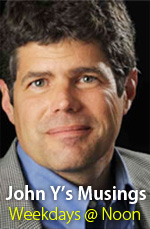 And you can wait for the mailman to leave and introduce yourself and tell the man you overheard him say he was related to Tip O’Neill and wanted to say how much you admired the personalized approach his uncle had to politics and think often of the story of President Ronald Reagan getting shot and the first person to visit him in the hospital was the democratic Speaker of the House, Tip O’Neill, and the two men talked and prayed together–and how you wish we could someday get back to those times in American politics. And you can wait for the mailman to leave and introduce yourself and tell the man you overheard him say he was related to Tip O’Neill and wanted to say how much you admired the personalized approach his uncle had to politics and think often of the story of President Ronald Reagan getting shot and the first person to visit him in the hospital was the democratic Speaker of the House, Tip O’Neill, and the two men talked and prayed together–and how you wish we could someday get back to those times in American politics.
===
Things one thinks to oneself while in Key West:
“Do you realize you are 50 years old and have never been to a transvestite show?”
===
 Dolphin art show
What we did tonight instead of going to the transvestite show–next door
Dolphins are great and all, don’t get me wrong. But they aren’t fabulous! ===
New thing I learned tonight in Key West….
Even if you are a blissfully happily married 50 year old man, it is still nice to be checked out by a younger woman.
Even after you realize it is actually a younger man who is dressed up as a women.
===
By John Y. Brown III, on Tue Apr 15, 2014 at 12:00 PM ET A smartphone “couples” app I’d like to see.
I’ve got an app to count calories and steps taken in a day.
Other apps help me gauge my business travel and finances and even help me manage dietary choices.
But what I could really use is an app that would help me determine how long I need to pout to equal or “get even” for undeserved slights from my wife Rebecca. For example, if Rebecca says “You never do such and such” when, in fact, I do occasionally do such and such –I just don’t do such and such all of the time– that is worth approximately 5-7 minutes of pouting.
How do I know?
I don’t.
That’s the problem.
 It’s just a gut feel. It’s just a gut feel.
And if I overestimate the necessary pouting length, that can lead to a retaliatory slight from Rebecca to level set things. Which then leads to another pout and another slight and so on.
Hence why an app that could tell me more accurately how long I should pout would be so handy. And like all good apps, it should be cross-functional allowing Rebecca to calibrate the precise counter slight for when I over pout.
By RP Nation, on Tue Apr 15, 2014 at 10:00 AM ET 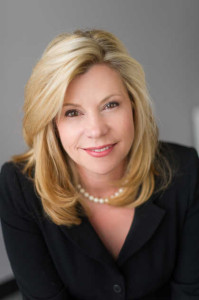 I am passionate about healthcare for the people of Kentucky. That is why I am proud of the leadership Governor Steve Beshear has done with our Kentucky Kynect, which now covers more than 402,000 people in the Commonwealth. Governor Beshear recognized opportunity, and knew the remedy for at just the right time for the people he serves. I am passionate about healthcare for the people of Kentucky. That is why I am proud of the leadership Governor Steve Beshear has done with our Kentucky Kynect, which now covers more than 402,000 people in the Commonwealth. Governor Beshear recognized opportunity, and knew the remedy for at just the right time for the people he serves.
And that is why I am disappointed that Representative Andy Barr and Senator Mitch McConnell are still blind to the facts, maintaining even stronger attempts to undermine Kentucky Kynect for people who had no insurance.
I often say Kentucky moms like me get more done by noon than Congress gets done in a week. So when I learned Congressman Andy Barr has voted 19 times to repeal healthcare reform I was disappointed.
Barr, along with Mitch McConnell, voted to end Kynect and let insurance companies drop coverage, deny care and charge women more.
Barr has been in office as 6th District Congressman since January 2013. Since then, he has voted at least 19 times to repeal healthcare. His latest effort was just last week, when he cast his vote for the disastrous Barr/Ryan Budget, which would also change Medicare as we know it. During his career, he has taken more than $148,000 in contributions from the insurance industry, according to Opensecrets.org.
Overall, Congress has voted about 54 times to repeal the health care law. McConnell has even been criticized nationally for grossly distorting statistics, particularly when Governor Beshear’s office was reporting great success right here in Kentucky.
When I am in Congress, the families of Kentucky’s 6th District won’t have to be afraid of me serving special interests over their interests. And when it comes to their healthcare, I will protect Kentucky Kynect. When it comes to Andy Barr and me that is a big difference.
Elisabeth Jensen, as an executive of a non-profit and with deep experience in the business community, brings the tools and experience needed to get the economy working again. She is running for Congress to seek common sense, bi-partisan solutions to the challenges facing our country. See www.elisabethforkentucky.com for more information.
By John Y. Brown III, on Mon Apr 14, 2014 at 12:00 PM ET 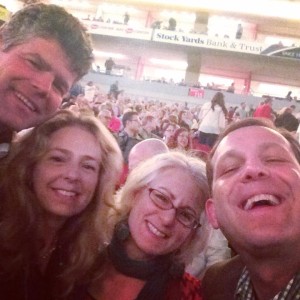 The author at the Billy Joel concert with some nudnick and two beautiful women  The first two music albums that I fell in love with were Billy Joel’s The Stranger and Steely Dan’s Aja. I was 13 years old. Over time I came to like Aja better but initially The Stranger was my favorite. First favorite albums always have a special place in your heart and which is why I was so excited to attend my first Billy Joel concert at the YUM center last week. The first two music albums that I fell in love with were Billy Joel’s The Stranger and Steely Dan’s Aja. I was 13 years old. Over time I came to like Aja better but initially The Stranger was my favorite. First favorite albums always have a special place in your heart and which is why I was so excited to attend my first Billy Joel concert at the YUM center last week.
The first thing I noticed was Billy Joel looks a lot different today than he did when I was first introduced to him in 1977. He even joked when introducing himself that he was really Billy Joel’s father. A lot of time has passed since The Stranger was released –37 years to be exact. But as I was treated to a generously long lifetime of songs from the legendary Billy Joel I couldn’t help but notice that –at least in my opinion—almost all of Joel’s greatest songs came from The Stranger (1977) or earlier works.
The 37 years that followed had produced some memorable and even exceptional songs but none that rated, again in my opinion, as classics or truly extraordinary pieces of music.
 Which made me think to myself that perhaps in music—and other professions—the key is to have a huge creative burst in your late 20s and then you can coast the rest of your life by replaying your greatest hits, so to speak, to sell out crowds. In other words, I asked myself, Was Billy Joel and so many other of our greatest artists their own version of Orson Welles –who stunned the world with his prodigy and prodigiousness in his early career before falling relatively flat during the ensuing decades? Which made me think to myself that perhaps in music—and other professions—the key is to have a huge creative burst in your late 20s and then you can coast the rest of your life by replaying your greatest hits, so to speak, to sell out crowds. In other words, I asked myself, Was Billy Joel and so many other of our greatest artists their own version of Orson Welles –who stunned the world with his prodigy and prodigiousness in his early career before falling relatively flat during the ensuing decades?
But as I remained entertained and even entranced by Billy Joel I knew something more was at play. Perhaps for some artists they do flame out early and coast for many years after that. But that is not what we were witnessing with Billy Joel. Yes, his greatest music perhaps was written when he was a younger man but we were not watching a man who was past his prime. He had matured from a great song writer to one of the greatest entertainers of our time. Joel may have been at the apex of his creativity in his 20s but now in his 60s Joel was still peaking as a performer and master musician.
So, as we were slowly filing out after the concert, I wondered to myself what this all meant. Perhaps it was that great creativity and breakthrough originality are breathtaking to experience but like all things that take your breath away are hard to sustain. But real passion and dedication that lasts not for months or years –but for decades –and is nurtured while honing your life’s work, may not take your breath away, but does elicit something even greater—an awe and respect as well as a record of sustained excellence that is even rarer and more special than moments of genius.
 The author at the Billy Joel Louisville concert with some nudnick and two beautiful women I learned, I suppose, that the depth of our devotion is more profound than the height of our creativity. In music. And in life. The former can create one of the great albums of a generation. But the latter can establish one of the greatest entertainers of our lifetime. And made me glad that the Billy Joel I finally got to see live wasn’t the brilliant 28 year old at his creative flashpoint, who would have still been very exciting to see, but rather was the 65 year old master of his craft and consummate musical performer, who truly was amazing to behold. And who also taught me an important lesson about life.
By Jonathan Miller, on Fri Apr 11, 2014 at 8:35 AM ET 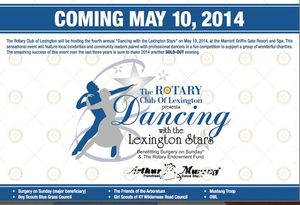 I never thought I’d say this again, but…I’d like to ask for your vote. I never thought I’d say this again, but…I’d like to ask for your vote.
Don’t worry: I haven’t fallen off the recovering politician wagon.
Lisa and I are celebrating our 25th wedding anniversary by competing in Lexington’s version of Dancing with the Stars (sponsored by our local Rotary Club). And despite my two left liberal feet, with the awesome instruction of Arthur Murray dance teacher Rae Dunn, and the continued fitness direction of globally-recognized personal trainer Josh Bowen, we’re actually getting in pretty good shape for the competition on May 10.
But I need your help.
(Sorry for that last sentence. My fundraising letter-writing muscle is to blame)
Your vote matters. and it is easy, affordable and for a great cause. Click here and scroll down the left side of the page to my picture, enter the number of votes you want to cast (at $5 per vote), and click the button at the bottom of the page to “pay now and vote.”
Your $5 contribution will go straight to benefit an incredible local program: Surgery on Sunday, as well as to the Lexington Rotary Club Endowment Fund, which supports more than 15 local community initiatives and charitable endeavors including the Carnegie Center of Literacy and Learning, Central Kentucky Radio Eye, Saint James Place, Explorium of Lexington, The Friends of the Arboretum, God’s Pantry Food Bank, International Book Project, Ronald McDonald House, Salvation Army, Mustang Troop, OWL-Opportunity for Work and Learning, Toyota Bluegrass Miracle League, World Fit and the YMCA of Central Kentucky Back to School Rallies.
So please click here, vote for me early and often (just $5 a vote!!!), and I promise not to run any negative campaign ads against my opponents. (Of course, if independent groups and 527s join the fray, I can’t do anything about that.)
By Jonathan Miller, on Tue Apr 8, 2014 at 9:00 AM ET For a few laughs on this official day of mourning in Big Blue Nation, be sure to check out my tweet recaps from the tourney games: Connecticut, Wisconsin, Michigan, Louisville.
An unwelcome and unfamiliar deep blue fog envelops the Bluegrass State this morning. In grocery stores and city parks and shopping malls, neighbors who months before felt nothing in common are now greeting each other with sad, knowing nods, exhausted shrugs, and wane, funereal “just wait ’til next year” salutations.
For after one of the most thrilling three weeks of cardiac-inducing, last-second-thrilling, and yes, community-building hardcourt theatre, the University of Kentucky Wildcats’ unexpected NCAA basketball tournament run came to a sudden and heartbreaking end at the hands of the newly-crowned national champion UConn Huskies.
And yet, while the Big Blue Nation mourns, much of the nation’s chattering class is leaping in giddy celebration. Kentucky basketball embodies to them everything that is wrong with the game, indeed with college sport as a whole. The focus of special ire is head coach John Calipari, for his diabolical exploitation of the NBA’s controversial “one and done” rule that permits pro teams to draft 19 year olds who are at least a year out of high school. As the Cats’ NBA-focused, all-freshman starting squad marches through March Madness — squashing upperclassmen-dominated rivals like Wisconsin, Michigan, and previously-undefeated underdog Wichita State — the righteous guardians of the Athenian ideal of amateur student athletics loudly decry the vulgar capitalist reality…in the form of a collection of mostly African-American teenagers representing one of the nation’s poorest states.
No doubt, many gripes with college hoops are quite legitimate. From its economic exploitation of teenage athletes, to the shady shoe contracts secured by its plutocratic coaches, to the blatantly unfair and hypocritical NCAA governance regime — big-time, big-money college roundball leaves many the casual fan with a guilty hangover after the last shimmy of the Big Dance in April. There also lies another, more intimate truth: Since middle school, much of my kind — the jump shot-challenged intelligentsia, that is — have scoffed at the popularity, coddling, and public financing of the jock culture. College is our sacred realm — for academics, scholarship and research, not professional sports-grooming.
But in rooting against the team that has mastered the flawed system, the critics are missing a greater truth: The keys to fixing the sport’s soul can be found precisely in the qualities that make Kentucky basketball so special. For while cerebral baseball and primal football continue to be heralded as our national pastimes; college basketball, particularly here in the heartland, really does matter.
At its core, basketball is the most populist and egalitarian of major sports. Its character derives in part from its tiny barriers to entry—all you need is a ball and a hoop to practice alone, and a bona fide game can be played with just a pal or a small group of friends. While its complex choreography and mosaic interpersonal psychodynamics are often underestimated, basketball is the simplest game to understand and appreciate. Ball goes into basket; your team scores. A contest’s time is precise and limited; its court dimensions, clear and uniform: As Gene Hackman famously proved in Hoosiers, the rim is always exactly ten feet from the ground whether at an urban playground or in a professional arena.
Basketball is also the ultimate spectator sport. Unlike radio-friendly baseball or HDTV-enhanced football, hoops are best enjoyed in person. With much, much less downtime than the Big Two, basketball games are filled with relentless exhibitions of artistry in action—colorful feats of intensely-rehearsed talent and gravity-defying acrobatics, while the participants remain in near constant motion. Because the vertical plane is regularly pierced, only basketball can provide those rare, sublime moments of transcendental grace. The courtside crowd isn’t distracted by the weather, organ player, food, bands, or tailgating: Until the final buzzer sounds, the game itself is the only thing that matters.
Whether in a high school gym or a professional arena, the game is played indoors, the fans on top of the action, literally involved in the hum and flow of the game, the most intimate among the major sports. In a game in which improvised and instinctual play is the norm, where fatigue and self-confidence are critical to performance, an enlivened and vocal crowd can provide enormous emotional and psychological comfort to the home squad, or can harass and dispirit the visitors. A home crowd—particularly at the college or high school level—becomes, for a few hours at least, a cohesive, interdependent community: Fans who might disagree sharply on matters of politics, religion, lifestyle, or just about any topic, join voices in passionate advocacy of their squad, or, almost as often, in intense criticism of the referees. It’s no coincidence that in many rural communities, most community-building events—graduation ceremonies, formal dances, citizen forums—take place in the high school gym.
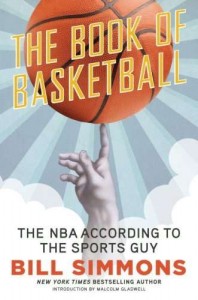 Indeed, a potent communitarian strand of populism—in contrast with the “me first” Tea Party variety—is modeled in the game itself. Bill Simmons’ bestseller, The Book of Basketball, reads in places like a Michael Sandel philosophy lecture or a 1968 Bobby Kennedy campaign speech: “The secret of basketball is that it’s not about basketball…Teams only win titles when their best players forget about statistics, sublimate their own games for the greater good and put their egos on hold.” And the greatest of the greats — Jordan, Magic, Bird — only earned their iconic status after they learned to surrender their own self-interest (high scoring averages) for the common good (winning championships), a noteworthy lesson in unselfishness and the Golden Rule for the boys, girls, and grownups who consider these hardwood heroes role models. Indeed, a potent communitarian strand of populism—in contrast with the “me first” Tea Party variety—is modeled in the game itself. Bill Simmons’ bestseller, The Book of Basketball, reads in places like a Michael Sandel philosophy lecture or a 1968 Bobby Kennedy campaign speech: “The secret of basketball is that it’s not about basketball…Teams only win titles when their best players forget about statistics, sublimate their own games for the greater good and put their egos on hold.” And the greatest of the greats — Jordan, Magic, Bird — only earned their iconic status after they learned to surrender their own self-interest (high scoring averages) for the common good (winning championships), a noteworthy lesson in unselfishness and the Golden Rule for the boys, girls, and grownups who consider these hardwood heroes role models.
There’s been no better example of this phenomenon than this year’s Kentucky Wildcat squad. Heralded last year as the best recruiting class in the history of college basketball, the freshmen-dominated Wildcat team suffered through a disappointing regular season — falling from number one in the preseason polls to out of the top 25 by season’s end. Undeniably, these teenage phenoms were extraordinarily talented individual ballers, but they simply weren’t gelling as a cohesive unit. It wasn’t until postseason that they learned to overcome their stereotypically-Millenneal narcissism and played selfless ball. And as a result, they emerged as one of the most beloved teams in the long, long lore of the blue and white tradition.
It’s no wonder then why college hoops have made such a remarkable and substantive impact on education at the University of Kentucky. The administration understands that many Kentucky families — especially those in the most remote, economically-depressed areas of the state — dream of sending their kids to UK, and it has leveraged roundball prowess to help market and fund all of its major academic initiatives and capital campaigns, including its ambitious long-term effort to transform the school into a Top 20 public research university. And while it’s an unusual, although not a unique, collegiate example, UK basketball not only sustains itself financially; but along with football, its profits help enable the athletic department — with 20 other sports teams–to pay for itself, plus provide millions of dollars to the school for non-athletic scholarships
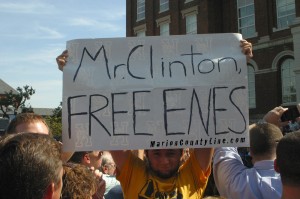 There’s also been perhaps no force more powerful for religious and racial fence-mending, at least here in the South. A few years ago, the hoops-mad University of Kentucky’s cause celebre was Enes Kanter, a recruit who was blocked permanently from college ball by the NCAA, citing his acceptance of payment in a professional league in his home country of Turkey. A “Free Enes” campaign grew organically from the grassroots, uniting the overwhelmingly Christian state behind a Muslim — not mind you, a more familiar American convert such as Louisville’s Cassius Clay/Muhammad Ali, but an honest-to-goodness, olive-skinned, Middle-Eastern Muslim. Imagine the impact Kanter could have made on religious tolerance had he been allowed to play and lead the Wildcats to another national title. There’s also been perhaps no force more powerful for religious and racial fence-mending, at least here in the South. A few years ago, the hoops-mad University of Kentucky’s cause celebre was Enes Kanter, a recruit who was blocked permanently from college ball by the NCAA, citing his acceptance of payment in a professional league in his home country of Turkey. A “Free Enes” campaign grew organically from the grassroots, uniting the overwhelmingly Christian state behind a Muslim — not mind you, a more familiar American convert such as Louisville’s Cassius Clay/Muhammad Ali, but an honest-to-goodness, olive-skinned, Middle-Eastern Muslim. Imagine the impact Kanter could have made on religious tolerance had he been allowed to play and lead the Wildcats to another national title.
Perhaps more poignantly, just a half century since UK’s all-white “Rupp’s Runts” lost the national championship to Texas Western’s history-making all-black starting lineup — the whitest of all southern states has fallen in love with a series of mostly “one and done” teams composed almost entirely of African-American teenagers, and reveled in their soul swagger and hip-hop sentimentality.
From this egalitarian spirit comes the reform necessary to rebuild the sport’s integrity. Most legitimate complaints about the sport revolve around the same principle that animates our current national debate about income inequality: The 1% (NCAA, elite coaches, broadcast networks, and advertisers) are acquiring obscene wealth at the expense of the 99% (the student athletes) who don’t earn a dime. Even under the NCAA’s rosiest recent projections, more than a third of college basketball players, the vast majority of whom will never gasp a whiff of professional riches, don’t graduate, and many that do fail to develop any meaningful job skills, or even middle school level reading skills.
If we can simply apply a dash of the same communitarian principles found in the sport itself to the policy deliberations of the sport’s governing bodies, we can enhance the people’s sport by ensuring that we provide sufficient economic opportunity to the young men who bring the rest of us such enjoyment.
One core flaw is the ludicrous and pernicious assumption that every “scholar-athlete” has the preparation, the aptitude — or even the need — to earn a four-year, liberal arts bachelor’s degree. For decades, outside of sport, policymakers have been encouraging youth from lower income environments and underachieving high schools (a common background for many a collegiate hoopster) to enroll in two-year vocational and technical colleges, where they can be empowered with the skills they need for the 21st century job market. That’s why it is incumbent on the NCAA and its member schools to direct athletes, when appropriate, to focus their academic attention on job skill and technical programs that interest them, prepare them for postgraduate life, and enable them to earn associates degrees at the university, or through an affiliated community college or vo-tech program. Similarly, while the vociferous criticism of “one and done” is overblown (It worked well for Bill Gates after all), the NBA and its players’ union should effectuate a new “two and done” system, which will enable each player to earn sufficient credit to graduate with at least an associates’ degree.
(Photo by Jeff Gross/Getty Images)
Further, while full compensation of athletes is both unmanageable and fiscally infeasible among already-financially strapped institutions, I suggest that athletes be paid an hourly living wage—the same for each player on scholarship; adjusted slightly among universities by local standards of living—that would provide athletes with some (but not too much) walking around money for the occasional restaurant jaunt or shopping spree (maybe they could finally afford their own replica jersey at the campus book store), as well as the exceptional luxury of flying their parents in for special games. Let some of the funding come from the schools’ much-criticized shoe contracts so that players don’t continue to serve as unpaid jumping billboards for their product.
March Madness is an opportunity for college basketball to hold a mirror to itself, and apply what is so right about the sport to fix what is so wrong about the institution. By working towards a system that reflects the same principles that are taught on the court and imitated by the fan base — equality, selflessness, and community — college basketball can truly take its rightful position as an American pasttime that truly reflects American values. And the talented band of teenagers that led Kentucky to the precipice of its ninth national championship can be held up as role models for the nation.
By John Y. Brown III, on Mon Apr 7, 2014 at 12:00 PM ET We either need more ways to say “no” or more ways for people to understand what we mean when we say “no.”
By itself “no” –a little two letter word– seems to be the most misunderstood and confusing word in the English language. When someone asks you if you would like such and such and you say “no” or “no thank you,” it’s as if you really are saying, “Gee, I can’t decide. Can you please help me with more options?” Because inevitability the other person will reapond “Oh, I understand. How about this other such and such or the original such and such in a larger size?”
Maybe we say the word “no” too fast and people can’t really hear or underatand us.
Or maybe it is a literacy issue where only about 10 or 15% of the population knows what the word “no” really means.
Or maybe “no” is just a word that has underperformed for so long it needs to be replaced by a longer, stronger and more daunting word. No?
See what I mean?! You were ready for a brand new tougher word for “no” until you saw that little wimpy wishy-washy word “no” that you’ve grown so used and attached to. And decided that even though it is weak, it is good enough.
 So maybe it’s not the word “no” but our own indifference and lackadaisical disposition toward saying “no” –and meaning it– that is the real culprit behind the lack of meaning behind the perplexing little word. So maybe it’s not the word “no” but our own indifference and lackadaisical disposition toward saying “no” –and meaning it– that is the real culprit behind the lack of meaning behind the perplexing little word.
There is something to that, isn’t there?
Nah.
Well….at least we have “nah” when we really mean “no” but “no” alone isn’t strong enough to do the trick. And the heck of it is that when “nah” was invented it was supposed to be weaker than “no!” The word “no” has clearly fallen on hard times.
So, for now, I guess, whenever we mean “no” we should say “nah” instead –and say it emphatically. Like this, “Nah!!”
Geez. That is pathetic sounding. And a little creepy. I think I’ll just keep saying “no” insted, for now, and letting people think I don’t really mean it –until we come up with some better options.
By John Y. Brown III, on Sat Apr 5, 2014 at 10:30 AM ET Note from John Y. Brown, III: Thanks to Randy Ratliff and Eric Crawford for drawing attention to about the best piece of journalism I’ve stumbled across in a long while. The piece, by Cory Collins, is a heartfelt and wrenchingly honest and humble personal piece asking probably the most unpopular question in central Kentucky this week on the eve of the NCAA Final Four; namely, Are we making too much of UK college basketball? Collins’ piece succeeds where so many pieces like it before have failed because it is not a disconnected and predictable scolding for misguided priorities but a sentimental and bittersweet journey of one thoughtful man who has been personally intertwined in the debate for many years and from many different vantage points. And who has reached a very thoughtful conclusion and desire to express it at precisely the moment when no one else in Kentucky really cares to hear it, including me. Which makes it all the more important that we do. And why I am glad I took the time to read it and respond to it just now.
(Photo by Jeff Gross/Getty Images)
Allow me to bestow remembrance, lest you forget the Battle on Broadway, circa 2013.
I was sports editor of a publication you’ve undoubtedly encountered on newsstands, somewhere between USA Today and The New York Times on the rack. For the uneducated, unwashed masses, lest you forget my work, it was The Rambler, Transylvania University’s student newspaper, circulation: 1,000.
And there was a basketball game. A preseason exhibition. A storied crosstown Lexington rivalry that none of your kids will talk about: the Kentucky Wildcats hosting the Transylvania Pioneers, my Division III institution that stands just a short Conestoga ride down Broadway from the sacred walls of Rupp Arena.
As you might imagine, hype was high, even if trash talk proved difficult. Something about “Hey, UK! In the 1800s, you were our AG SCHOOL! And we reap what we sow!” didn’t exactly elicit fear in the hearts of seven-foot Wildcats.
We lost. I’ll spare you the bloody details. But Pioneers could take pride in a 30-second spot on ESPN’s SportsNation, where our own Brandon Rash (sort of) posterized Willie Cauley-Stein. The reaction was predictable, only lacking the low-hanging fruit that is a joke about Dracula.
The host, Colin Cowherd, mocked the name on the chest, as if to ask, where the hell is Transylvania?
It’s hard to blame him. For in the world of sports, we were Atlantis, lost in the Lexington, Ky., sea of blue.
 Perhaps we wore crimson because we often acted as a vein pumping blood into the heart of Big Blue Nation. We had our fair share of duel-fandom, students who wanted Transy diplomas but UK basketball T-shirts. We had Matt Jones, who became the host of Kentucky Sports Radio. We have current senior Ben Lyvers, who helps lead a Pioneer cheering section but wore blue to the Battle on Broadway. Perhaps we wore crimson because we often acted as a vein pumping blood into the heart of Big Blue Nation. We had our fair share of duel-fandom, students who wanted Transy diplomas but UK basketball T-shirts. We had Matt Jones, who became the host of Kentucky Sports Radio. We have current senior Ben Lyvers, who helps lead a Pioneer cheering section but wore blue to the Battle on Broadway.
And we had me. Stubborn, hipster me. Adamant that I had picked sides. Adamant that I had put my heart into Transylvania and a critical eye on Kentucky.
What I saw: it wasn’t that simple.
***
I don’t know when I became an outsider.
Before Cory Collins waxed poetic about the problems with big-money college athletics and referred to himself in the third person, Cory Collins played basketball on a plot of packed mud, a basketball hoop nailed to a tree. For hours, he played. And when the names taking the shots weren’t imaginary, they were often Wildcats.
I was just a rural Kentucky boy with a dream, and like many children, I loved things unconditionally and disproportionally. I loved shooting the basketball. And of all Wildcats, I loved Wayne Turner, and the way he shot free throws like he was mean enough to throw a baby backwards but kind enough to put a hand behind its head. I’d mimic the motion, because a swish is just as sweet when its origin makes no sense. And it made me smile. Why isn’t motivation always so simple?
I can’t pinpoint the exact moment that boyhood admiration for Big Blue disappeared. I turned into that typical creative, heady kid who seeks to assert himself. I dreamed beyond the boundaries of Kentucky, and thus, I cheated on my childhood and fell in love with new groups of young men playing ball games. I loved Texas’s baseball squad, UCLA’s color palette.
But these were fleeting fancies. In the end, I went to Transylvania, years after I discovered that a late-bloomer who has a way with words does not a scholarship athlete make. I thought my choice was made, my allegiance assigned. I’d left behind that Kentucky boy.
Instead, I found myself in an epicenter.
***
To live in Lexington with objective eyes is to see it: the big money program, the John Calipari car commercials, the burning couches, the fandom that does not border on obsession but defines it. I’ll admit that I was disenfranchised by its surround-sound persistence.
In 2012, when Big Blue raised its eighth banner, I was there as chaos hit State Street and Limestone. The success of selfless superstars like Anthony Davis and Michael Kidd-Gilchrist begat something much different — a mass self-indulgence. The destruction, the binge drinking, that’s what you’d see if you look no further than the six o’clock news.
So on the surface, it looked like everything that is wrong with the Kentucky fan base, what some may call the Alabama football following of the hardwood. A group that stands on a self-built pedestal, downgrades the outsider, and takes criticism as personal affront. But if that’s all you see, you miss a bit of beauty in Big Blue Nation:
You miss the fans that have nothing else to hold on to, not just in the streets of Lexington, but in the mountains, on the farms, inside the trailer parks where, without Big Blue, hope is a penny stock and they can’t afford it.
You miss the bond Big Blue perpetuates. As the aforementioned Mr. Lyvers explains it, “It just gives you chills. I’ve high-fived so many strangers in the past two weeks I had to ice my hand. It’s unifying.”
You miss the rare moment in the 21st century when something has the power to send people from their digital screens and screened-in porches to celebrate as a community.
But it should be said: if you only skim the surface of Kentucky basketball, you miss the dangers in the undertow.
***
When this culture surrounds you, so too does its flaws.
There are the obvious problems that you can find on the Twitter accounts of Jay Bilas of ESPN (@JayBilas) and Steve Berkowitz of USA Today (@ByBerkowitz) — Calipari’s unbelievable salary, the marketing of young men, an infrastructure so out of touch with its fan base that it sometimes feels like basketball’s McDonald’s, letting its poor indulge on unhealthy expectations until they are full.
But there are other things you see up close. There’s the way Kentucky basketball defines a city, despite a burgeoning culture of art, of inclusion, of creativity that fights to compete with its significance.
There is a dangerous dependence where identities, days, and moods are determined by wins and losses. It isn’t fandom, it’s a civil war, the difference between Kentucky being a national champion and a national punch line.
There appears to be a value system of athletics over academics, despite Calipari’s insistence to the contrary. UK is a team, in some eyes, before it’s a school. The school’s own official Twitter account, after 2012, led off its description promoting itself as the home of basketball’s best team. There was, surprisingly, no mention of its music program.
There is the onslaught of one-and-done, which has created a distance between fans and players. A veteran like Patrick Patterson is now the rarity. And while these fans understand better than many that dreams are fleeting, and that winning has a way of healing the hurt, they engage a coping mechanism. They decide the latest bunch will soon be gone, lament the loss of the old days and discard the new ones.
As an observer, as a liberal arts student and millennial hippie with cultural sensitivity and ingrained skepticism, this troubles me. But then I dare to look beneath the extremes. Beyond the ugly sides of fandom and into the beautiful in-between.
***
It was only two years ago when Kentucky represented the model for how youthful superstars could coalesce into something spectacular. It was only two months ago when Kentucky seemed to offer proof that no number of high school All-Americans could overcome the intangible necessities of experience and chemistry to succeed.
Now, the Wildcats are only two games away from potentially reclaiming the crown.
And on one hand, I dread it. I dread the fed beast that is the Big Blue Nation. I dread the calls to sports radio that will cement stereotypes of a Kentucky mindlessness that sees basketball, but misses the point.
But on the other hand, I can see it. I can already envision the sights of the state I called home. And some of it is beautiful.
I can see my Aunt Becky, as she battles cancer, for a moment able to stand strong, a tear in her eyes, a blue shirt over her heart, the words “our boys” on her lips as they dance across her television screen, victorious.
I can see the streets of Lexington, swarmed in jubilation. And beneath the binge-drinking, the danger, some student just happy to be there will hug a stranger, or take a selfie on Limestone Street with no intent to destroy, just to remember.
I can see a boy, somewhere, in the woods on a mud-packed court, running outside like I did in 1998, counting down imaginary seconds, perfecting Andrew Harrison’s follow through. Just a boy in the middle of nowhere that can dream of being somebody.
And yes, I can see the sight of freshman boys beneath confetti, a farewell party where their parting gift is the title, “National Champion,” smiling while we damn the system. The system that, God forbid, lets these boys of basketball leave to do what they love.
That’s when I’ll realize: who am I to damn the dreamers? Why should I, an outsider who can see the inside, fault the Big Blue Nation for its happiness?
I am critical. Of the money, of the culture, of the insensitivity and ignorance that can sometimes flow from a fan base so devoted to winning basketball games that it forgets that there are human beings beneath the jerseys, both the opposition’s and the one’s that spell “Kentucky” across the chest.
And there will be a time to revisit the one-and-done. To reconsider the explicability of recruiting players to use their university as a stepping stone to greatness, of sacrificing a sense of continuity for a sense of contention. To rediscover a game that used to be a Kentucky pastime before it became a Kentucky corporation.
But it is not just a cliché, in Kentucky, to miss the forest for the trees. So many problems dot the landscape that it’s easy to lose the scenery, to overlook the beauty.
I couldn’t truly see it until I left. I had intended to write about living within the city limits of Kentucky’s evil empire for four years, of lamenting how Kentucky ball courts became cult cathedrals.
But then I remembered that, beneath the burning couches, the hateful words on talk radio and the complicated racial relationship between player and fan (all of which still boils my Kentucky blood), there was happiness. There were smiles.
Because yes, we do have teeth in Kentucky. There’s just not always much reason to show them.
There’s a reason that a recent study from Gallup Healthways ranked two areas in the Commonwealth among the nation’s ten most miserable. For many, times are tough.
And if it takes millions of dollars, a basketball and a miracle run to bring those smiles back to Big Blue Nation — if it takes two Harrison twins and one coach with a car salesman’s smile — on some level, just maybe, it’s worth it.
Or maybe I’m still Wayne Turner in the wooded back yard, and I’ll never have a proper grip.
By Jonathan Miller, on Fri Apr 4, 2014 at 10:00 AM ET In my latest column for The Daily Beast, I discuss what I believe was the greatest speech of the 20th Century. Here’s an excerpt:
America is the story of improvisation.
From the ad hoc debates that framed our founding documents, to the native jazz syncopations that power our cultural soundtrack, to the deeply American notion that we all deserve second chances — our national fabric is woven together by motley patches of spontaneous innovation, creativity and reinvention.
It’s no wonder that we cherish the myth that our history’s greatest oration was scribbled furiously on the back of an envelope during a train ride to a Pennsylvania battlefield.
But while Lincoln’s words were more planned and deliberate, the most significant speech of the 20th century was indeed improvised, a spontaneous burst of prose and poetry in the immediate wake of national tragedy. And much as the Gettysburg Address forever redefined the Founders’ promise that “all men are created equal,” Bobby Kennedy’s extemporaneous eulogy to Martin Luther King, Jr. — delivered 46 years ago today — can offer a path toward a more just, compassionate second act for our country.
===
It was the evening of April 4, 1968, and a bitter, black nightfall had descended on one of our nation’s grayest days.
Rejecting the impassioned urging of local officials who feared imminent violence, Senator Robert F. Kennedy ascended the back of a flatbed truck in a vacant lot, surrounded by dilapidated public housing units, in the heart of the Indianapolis ghetto. Hair tussled, wearing the old overcoat of his fallen brother, Bobby stepped up to a single microphone before a growingly angry African-American audience that had waited hours in the freezing cold to confirm what many had already heard: that Martin Luther King, Jr. — their Voice — had been permanently silenced. And without notes, speaking directly from his heart, a heart that ached from an unimaginable half-decade of grief — grief for a brother, for a comrade-in-peace, for a nation in turmoil — Robert Kennedy improvised the speech of his life.
Click here to read “RFK and the Healing Power of Improvisation.”
And watch RFK’s moving oratory below:
By John Y. Brown III, on Mon Mar 31, 2014 at 10:00 AM ET The 2013-14 UK Wildcats men’s basketball team started the season ranked first in the nation and started the NCAA tournament unranked and noteworthy primarily
for what they hadn’t done this season.
But that was a very long time ago—at the beginning of the tournament —and with 68 teams competing.
A couple weeks have passed and now there are just four teams left, including the team of destiny that became the team of disappointment before they became again the team of destiny.
And vanquished the Duke ’92 demon that had festered for 22 years…..before avenging the Michigan Fab 5 loss that had lingered for 23 years…..all while playing 120 consecutive minutes of the steeliest and most exciting basketball in perhaps Kentucky’s storied college basketball history…and who still haven’t played to their fullest possible potential…but have one last chance in Dallas next week to do just that.
And is a team that will never be accused of disappointing their fans or their followers and is now on their way to Dallas because they have a date with destiny…and only themselves left to prove something to.
 We, the fans, are privileged to be along for this special ride–of the 2013-14 UK basketball team —a team that will not go down as the greatest, or most unforgettable, or most invincible UK team ever….but will be remembered quite possibly as the damnedest team in modern UK basketball history. And certainly one of the most special. We, the fans, are privileged to be along for this special ride–of the 2013-14 UK basketball team —a team that will not go down as the greatest, or most unforgettable, or most invincible UK team ever….but will be remembered quite possibly as the damnedest team in modern UK basketball history. And certainly one of the most special.
Good luck navigating your destiny the rest of the way. It’s on you, fellas.
Just know your fans are proudly behind you –every single last step of your blessed way.
|
The Recovering Politician Bookstore
|
 Key West, Florida… Forever and always the year ’round spring break city for ages 18 to 88–but a city that really isn’t a city at all and more like a narrow corridor off of an alcove off of some real city (but nobody is sure which one) that just happens to be located somewhere between an ocean beach and the end of the world.
Key West, Florida… Forever and always the year ’round spring break city for ages 18 to 88–but a city that really isn’t a city at all and more like a narrow corridor off of an alcove off of some real city (but nobody is sure which one) that just happens to be located somewhere between an ocean beach and the end of the world. And you can wait for the mailman to leave and introduce yourself and tell the man you overheard him say he was related to Tip O’Neill and wanted to say how much you admired the personalized approach his uncle had to politics and think often of the story of President Ronald Reagan getting shot and the first person to visit him in the hospital was the democratic Speaker of the House, Tip O’Neill, and the two men talked and prayed together–and how you wish we could someday get back to those times in American politics.
And you can wait for the mailman to leave and introduce yourself and tell the man you overheard him say he was related to Tip O’Neill and wanted to say how much you admired the personalized approach his uncle had to politics and think often of the story of President Ronald Reagan getting shot and the first person to visit him in the hospital was the democratic Speaker of the House, Tip O’Neill, and the two men talked and prayed together–and how you wish we could someday get back to those times in American politics. Dolphin art show
Dolphin art show








 I never thought I’d say this again, but…
I never thought I’d say this again, but…




